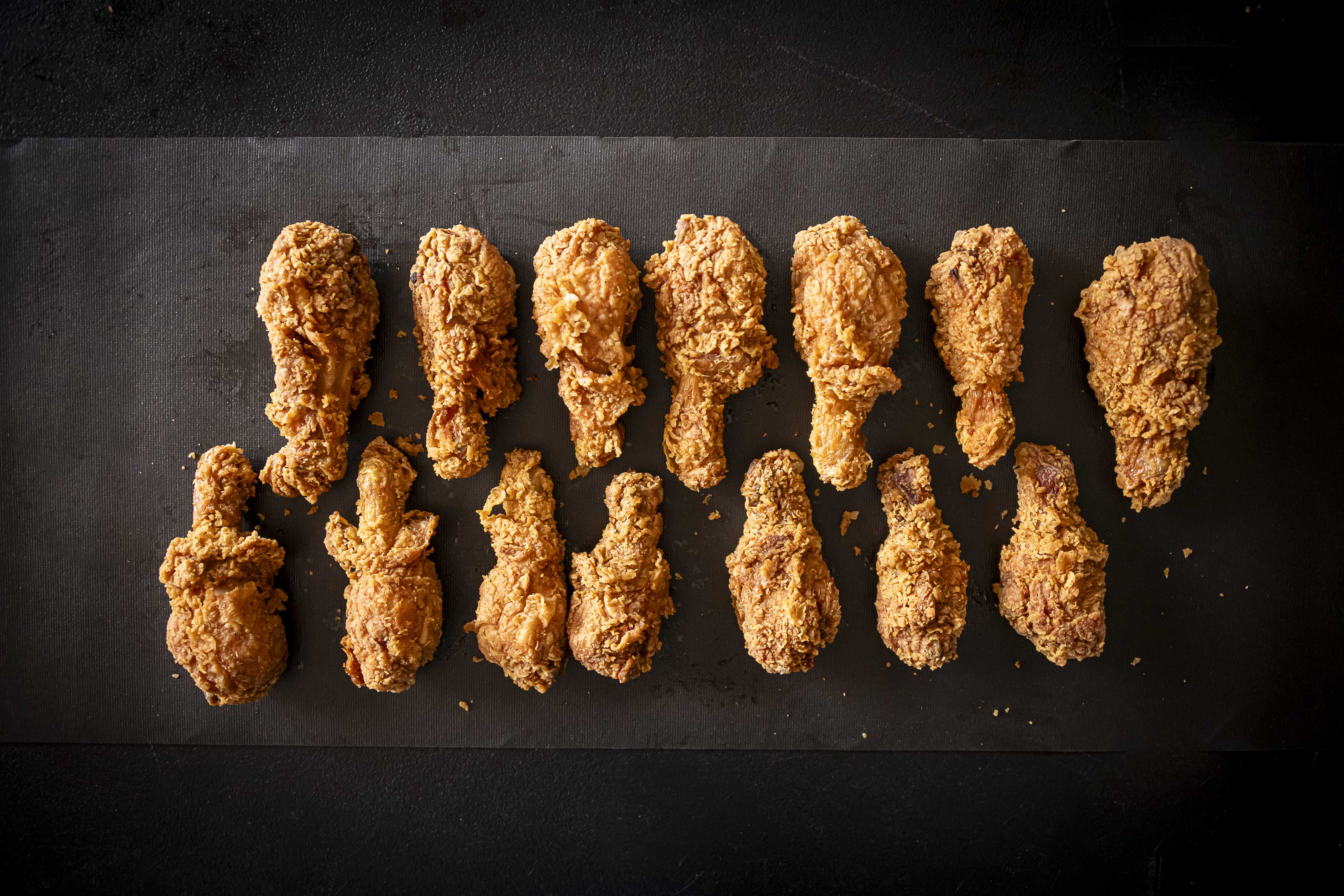The information presented on this page may be dated. It may refer to situations which have changed or people who are no longer affiliated with the university. It is archived as part of Mississippi State University's history.
Global consumption of poultry is at an all-time high, but our insatiable appetite has come home to roost. Among the causes of foodborne illnesses, Campylobacter jejuni bacteria are responsible for 90 percent of human infections, which cause acute gastroenteritis.
With the rise in poultry consumption, infections rose 13 percent from 2016-2019 and hit 1.5 million cases in 2020, surpassing the number of Salmonella infections. Mississippi Agricultural and Forestry Experiment Station (MAFES) researchers are seeking solutions to contain the problem at the source—the bird's GI tract.
In a study funded by the U.S. Poultry and Egg Association, Dr. Li Zhang, assistant professor and microbiologist in the poultry science department, has been studying this insidious bacterium down to its very DNA to develop a vaccine for commercial poultry
"The poultry industry has largely moved away from administering antibiotics to control bacterial infections in commercial birds," he said. "An effective vaccine is one of the most promising antibiotic alternatives that can help us reduce Campylobacter colonization."
Between 45 and 60 percent of raw chicken meat contains Campylobacter, which take up symptom-free residence in the bird's gut and are spread to its meat during processing. The bacteria are eliminated with properly preparing and thoroughly cooking the meat. However, accidents happen—most often when liquid from the raw meat contaminates preparation surfaces or other ready-to-eat foods, such as vegetables.
For Zhang, the risks of Campylobacter contamination are too great to leave to chance. He sees vaccination as a solution that can target the bacteria at its source, long before the bird makes its journey to the processing plant. Along with using best management practices in the chicken house and supplementing with feed additives like prebiotics and probiotics, vaccination is a strong and effective preventative measure.
Zhang and his team approached the development of a vaccine using a reverse vaccinology approach—a state-of-the-art method adopting computational technologies called bioinformatics to characterize possible proteins necessary to a pathogen's survival. The vaccines work by targeting these proteins and using them to trigger an immune response to fight off the pathogen. The greatest advantage of reverse vaccinology is that a final product can be developed in one to two years, compared with the five-to-15-year timeline of traditional methods.
"Before reverse vaccinology, it was impossible to develop a vaccine against this pathogen due to its complex structure," he said. "This proven technique is quick and cost-effective, and it provides a robust analysis of the genome, while traditional approaches take years to characterize a single protein.
To begin, Zhang and his team used a whole-genome sequencing process to analyze the genetic information of four C. jejuni strains isolated from retail chicken meat and broiler feces. They analyzed the strains with bioinformatics analysis to produce six prospective antigens, or candidate genes. From there, they conducted in silico (virtual) analysis and in vitro (test tube) models of cell infection and identified three novel antigens that might be the most potent vaccine candidates.
"The antigens we identified have never been tested as vaccine candidates before, and this is the first time we identified them with both in silico and in vitro analysis," he said. "We found that these genes play crucial roles during bacterial pathogenesis, when bacteria infect a host, and have a strong presence in C. jejuni strains."
Much work still lies ahead for Zhang and his team to produce a vaccine that reduces the colonization of Campylobacter in the GI tract of commercial broilers. Their next steps involve formulating the vaccine and conducting in vivo (in the bird) tests of the three potential antigens to select the most effective and to determine the optimal age, dosage, and method to administer the vaccine.
"I am thankful for everyone who contributed to this research, from my graduate students to our collaborators and bioinformatics support," he said. "And I'm grateful for the support of the U.S. Poultry and Egg Association and hope to continue working with them to meet the industry's needs."
This research is funded by the U.S. Poultry and Egg Association and the Mississippi Agricultural and Forestry Experiment Station (MAFES).
The poultry industry has largely moved away from administering antibiotics to control bacterial infections in commercial birds. An effective vaccine is one of the most promising antibiotic alternatives that can help us reduce Campylobacter colonization.
Dr. Li zhang
Behind the Science

Li Zhang
Assistant Professor
Education: B.S., M.S., Food Science, Northeast Agricultural University, China; Ph.D., Nutrition, Mississippi State University
Years At MSU: The cycle of teaching, learning, and innovating is what drives me every day.
Focus: Agricultural microbiomes, animal health, and food safety
Passion At Work: The cycle of teaching, learning, and innovating is what drives me every day.

